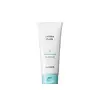What's inside
What's inside
 Key Ingredients
Key Ingredients

 Benefits
Benefits

 Concerns
Concerns

No concerns
 Ingredients Side-by-side
Ingredients Side-by-side

Water
Skin ConditioningGlycerin
HumectantButylene Glycol
HumectantHydrogenated Polydecene
Emollient1,2-Hexanediol
Skin ConditioningDiglycerin
HumectantPropanediol
SolventAnthemis Nobilis Flower Extract
MaskingPanthenol
Skin ConditioningFragaria Vesca Leaf Extract
AstringentEthylhexylglycerin
Skin ConditioningCentella Asiatica Extract
CleansingDisodium EDTA
Portulaca Oleracea Extract
Skin ConditioningPolygonum Cuspidatum Root Extract
AntioxidantScutellaria Baicalensis Root Extract
AstringentSodium Hyaluronate
HumectantHyaluronic Acid
HumectantHydrolyzed Hyaluronic Acid
HumectantGlycyrrhiza Glabra Root Extract
BleachingCamellia Sinensis Leaf Extract
AntimicrobialChamomilla Recutita Flower Extract
MaskingRosmarinus Officinalis Leaf Extract
AntimicrobialCalendula Officinalis Extract
Skin ConditioningMadecassoside
AntioxidantCetearyl Olivate
Sorbitan Olivate
EmulsifyingCarbomer
Emulsion StabilisingAmmonium Acryloyldimethyltaurate/Vp Copolymer
Tromethamine
BufferingWater, Glycerin, Butylene Glycol, Hydrogenated Polydecene, 1,2-Hexanediol, Diglycerin, Propanediol, Anthemis Nobilis Flower Extract, Panthenol, Fragaria Vesca Leaf Extract, Ethylhexylglycerin, Centella Asiatica Extract, Disodium EDTA, Portulaca Oleracea Extract, Polygonum Cuspidatum Root Extract, Scutellaria Baicalensis Root Extract, Sodium Hyaluronate, Hyaluronic Acid, Hydrolyzed Hyaluronic Acid, Glycyrrhiza Glabra Root Extract, Camellia Sinensis Leaf Extract, Chamomilla Recutita Flower Extract, Rosmarinus Officinalis Leaf Extract, Calendula Officinalis Extract, Madecassoside, Cetearyl Olivate, Sorbitan Olivate, Carbomer, Ammonium Acryloyldimethyltaurate/Vp Copolymer, Tromethamine
Water
Skin ConditioningGlycerin
HumectantCaprylic/Capric Triglyceride
MaskingNiacinamide
SmoothingCetearyl Alcohol
EmollientPotassium Phosphate
BufferingCeramide NP
Skin ConditioningCeramide AP
Skin ConditioningCeramide EOP
Skin ConditioningCarbomer
Emulsion StabilisingDimethicone
EmollientCeteareth-20
CleansingBehentrimonium Methosulfate
Sodium Lauroyl Lactylate
EmulsifyingSodium Hyaluronate
HumectantCholesterol
EmollientPhenoxyethanol
PreservativeDisodium EDTA
Dipotassium Phosphate
BufferingCaprylyl Glycol
EmollientPhytosphingosine
Skin ConditioningXanthan Gum
EmulsifyingPolyglyceryl-3 Diisostearate
EmulsifyingEthylhexylglycerin
Skin ConditioningWater, Glycerin, Caprylic/Capric Triglyceride, Niacinamide, Cetearyl Alcohol, Potassium Phosphate, Ceramide NP, Ceramide AP, Ceramide EOP, Carbomer, Dimethicone, Ceteareth-20, Behentrimonium Methosulfate, Sodium Lauroyl Lactylate, Sodium Hyaluronate, Cholesterol, Phenoxyethanol, Disodium EDTA, Dipotassium Phosphate, Caprylyl Glycol, Phytosphingosine, Xanthan Gum, Polyglyceryl-3 Diisostearate, Ethylhexylglycerin
 Reviews
Reviews

Ingredients Explained
These ingredients are found in both products.
Ingredients higher up in an ingredient list are typically present in a larger amount.
Carbomer is a polymer of acrylic acid. Its main role is to create a gel consistency.
A high amount of carbomer can cause pilling or balling up of products. Don't worry, most products contain 1% or less of carbomer.
Disodium EDTA plays a role in making products more stable by aiding other preservatives.
It is a chelating agent, meaning it neutralizes metal ions that may be found in a product.
Disodium EDTA is a salt of edetic acid and is found to be safe in cosmetic ingredients.
Learn more about Disodium EDTAEthylhexylglycerin (we can't pronounce this either) is commonly used as a preservative and skin softener. It is derived from glyceryl.
You might see Ethylhexylglycerin often paired with other preservatives such as phenoxyethanol. Ethylhexylglycerin has been found to increase the effectiveness of these other preservatives.
Glycerin is already naturally found in your skin. It helps moisturize and protect your skin.
A study from 2016 found glycerin to be more effective as a humectant than AHAs and hyaluronic acid.
As a humectant, it helps the skin stay hydrated by pulling moisture to your skin. The low molecular weight of glycerin allows it to pull moisture into the deeper layers of your skin.
Hydrated skin improves your skin barrier; Your skin barrier helps protect against irritants and bacteria.
Glycerin has also been found to have antimicrobial and antiviral properties. Due to these properties, glycerin is often used in wound and burn treatments.
In cosmetics, glycerin is usually derived from plants such as soybean or palm. However, it can also be sourced from animals, such as tallow or animal fat.
This ingredient is organic, colorless, odorless, and non-toxic.
Glycerin is the name for this ingredient in American English. British English uses Glycerol/Glycerine.
Learn more about GlycerinSodium Hyaluronate is hyaluronic acid's salt form. It is commonly derived from the sodium salt of hyaluronic acid.
Like hyaluronic acid, it is great at holding water and acts as a humectant. This makes it a great skin hydrating ingredient.
Sodium Hyaluronate is naturally occurring in our bodies and is mostly found in eye fluid and joints.
These are some other common types of Hyaluronic Acid:
Learn more about Sodium HyaluronateWater. It's the most common cosmetic ingredient of all. You'll usually see it at the top of ingredient lists, meaning that it makes up the largest part of the product.
So why is it so popular? Water most often acts as a solvent - this means that it helps dissolve other ingredients into the formulation.
You'll also recognize water as that liquid we all need to stay alive. If you see this, drink a glass of water. Stay hydrated!
Learn more about Water